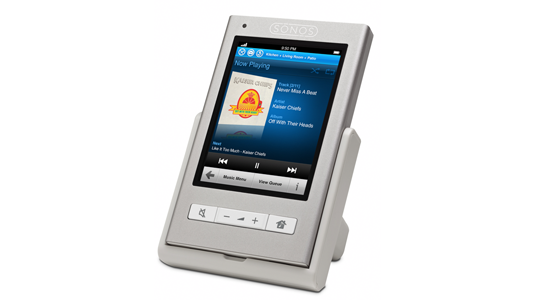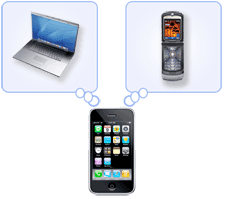 Contrary to current received wisdom, Twitter doesn’t change everything. At least it appears not to have changed the venerable San Diego pop culture extravaganza known as Comic-Con very much. Variety’s Marc Graser is reporting that the Hollwood moguls who thought the con would be all a-Twitter with discussion of the blockbusters previewed to audiences of thousands were disappointed by the volume of movie-related tweetage that actually happened. Unlike South by Southwest Interactive, Comic-Con remained a largely real-world event.
Contrary to current received wisdom, Twitter doesn’t change everything. At least it appears not to have changed the venerable San Diego pop culture extravaganza known as Comic-Con very much. Variety’s Marc Graser is reporting that the Hollwood moguls who thought the con would be all a-Twitter with discussion of the blockbusters previewed to audiences of thousands were disappointed by the volume of movie-related tweetage that actually happened. Unlike South by Southwest Interactive, Comic-Con remained a largely real-world event.
I’ve been attending the convention off and on for more than twenty years, including this year’s edition, and I’m not surprised that it didn’t turn out to be that much of a tweetfest. Here’s why:
Comic-Con isn’t necessarily rife with technogeeks. Movie and comics geeks, yes. But in three days of con, I was the only person I spotted using a laptop in any of the panels and previews. Actually, I saw only about three or four computers, period. It’s true that the overlap between fantasy fans and Web addicts is large, but perhaps even Web-savvy congoers weren’t in technonerd mode last week.
Comic-Con itself isn’t that tech-savvy an event. Thanks to sponsorship by iGoogle, it did offer free Wi-Fi this year, but that fact wasn’t widely promoted. (Last year, Wi-Fi was pricey, and in years past the rates were designed to gouge exhibitors.) As far as I know, the con doesn’t do things like offer an iPhone application or send out the sessions as an RSS or iCal feed. It’s just not an event that puts the Internet front and center.
Comic-Con is incredibly jam-packed with stuff to do. There are dozens of things going on at any given moment, and the pace is far faster than the laid-back SxSW atmosphere. If you attend every preview, panel, and party you find enticing, there’s no time left to tweet.
Comic-Con doesn’t involve breaks. The previews and panels run back-to-back, and if you’re going to one of the most crowded events–which includes all the major movie previews–you’re lucky if you get in at all. You can’t tweet while you’re rushing down a hallway from one end of the convention center to another.
Actually, standing in one place at Comic-Con long enough to tweet is hard, period. The show floor, in particular, is one of the most bustling places I’ve ever been–if you stop moving, you’re likely to be flattened by a squadron of Stormtroopers.
Tweeting at the movie previews is tricky. They’re held in darkened halls, and the illumination of your phone might tick off nearby fellow attendees. The previews are also accompanied by repeated stern warnings about the prohibition of phototaking and audio recording; I’m paranoid, but I tend to keep my phone in my pocket for fear of being mistaken for a pirate and getting dragged off by San Diego Convention Center security goons.
Comic-Con is a sensory experience. South by Southwest Interactive is mostly conversational. Comic-Con involves movies and comics and people dressed as Batgirl and Boris Badenov, plus the opportunity to meet folks such as Ray Bradbury and Stan Freberg–neither of who, I’m guessing, spend much time on Twitter. It’s possible to tweet about it (I did some of that myself) but less satisfying than being there.
Will Twitter have more of an impact at Comic-Con next year? Maybe so–I’m guessing that we still haven’t seen the service peak as a cultural phenomenon. But the convention, at its best, is a pretty wonderful event even sans Twitter. Hollywood may be disappointed, but the low-volume tweeting may simply have been evidence that those 120,000 congoers were having a really, really good time.
 Multiple reliable sources are reporting that Microsoft and Yahoo have finalized a deal to work together on search and advertising, and it’ll be announced tomorrow. It’s not the merger that Microsoft wasted an immense amount of time on last year, and it’s apparently not as sweeping an arrangement as some folks thought the company would strike. But it’s still a big deal.
Multiple reliable sources are reporting that Microsoft and Yahoo have finalized a deal to work together on search and advertising, and it’ll be announced tomorrow. It’s not the merger that Microsoft wasted an immense amount of time on last year, and it’s apparently not as sweeping an arrangement as some folks thought the company would strike. But it’s still a big deal.
 Contrary to current received wisdom, Twitter doesn’t change everything. At least it appears not to have changed the
Contrary to current received wisdom, Twitter doesn’t change everything. At least it appears not to have changed the 

 Over at Zatz Not Funny, blogger (and frequent Technologizer commenter) Dave Zatz has
Over at Zatz Not Funny, blogger (and frequent Technologizer commenter) Dave Zatz has  What a revoltin’ development this is. As my colleague Jason Meserve
What a revoltin’ development this is. As my colleague Jason Meserve 
 About the only thing we know for sure about Apple’s allegedly upcoming tablet computer is that there’s definitely misinformation floating around at the moment. Last week, AppleInsider. Last week, AppleInsider was
About the only thing we know for sure about Apple’s allegedly upcoming tablet computer is that there’s definitely misinformation floating around at the moment. Last week, AppleInsider. Last week, AppleInsider was 
 Novelist Nicholson Baker is an unapologetic friend of paper–and his book
Novelist Nicholson Baker is an unapologetic friend of paper–and his book 
